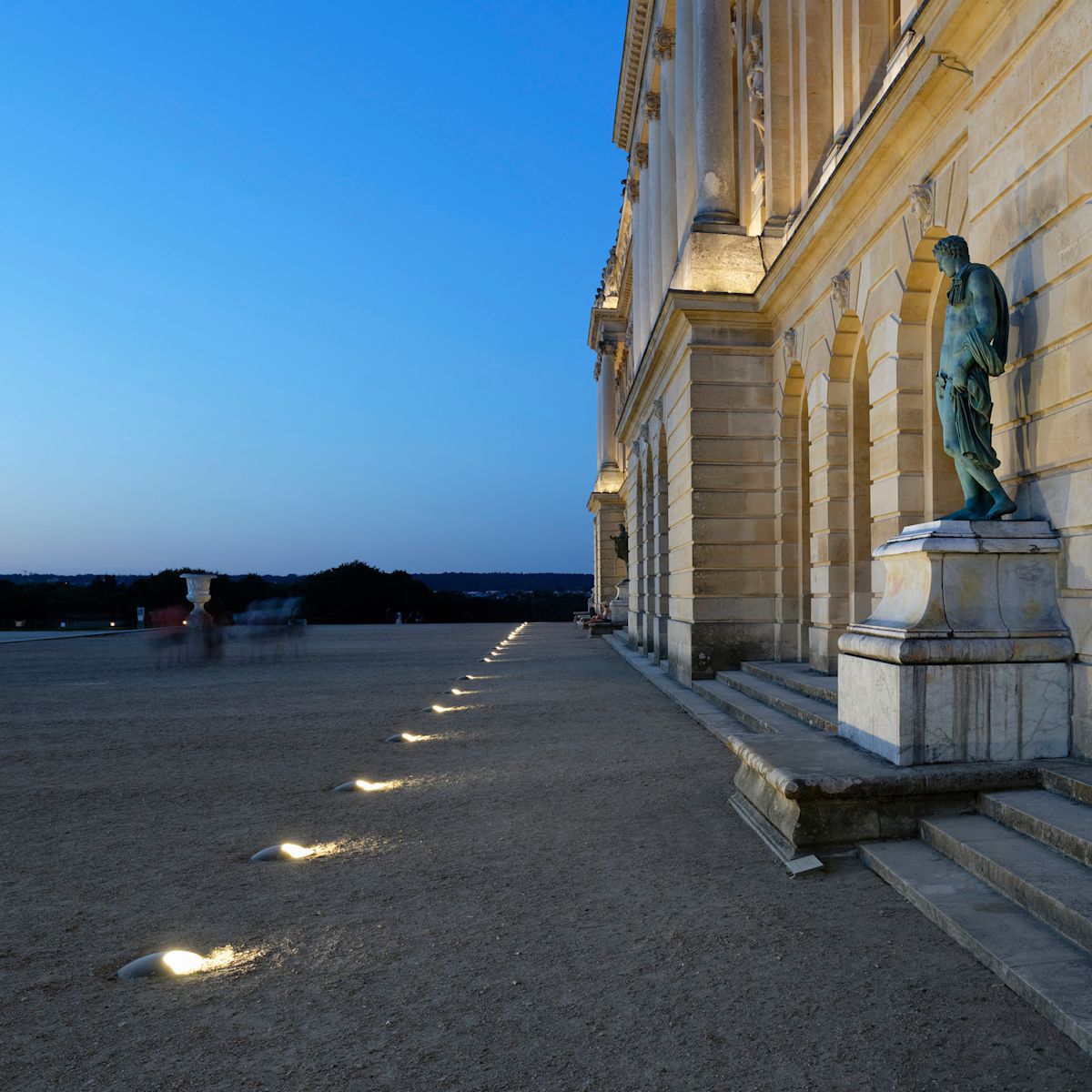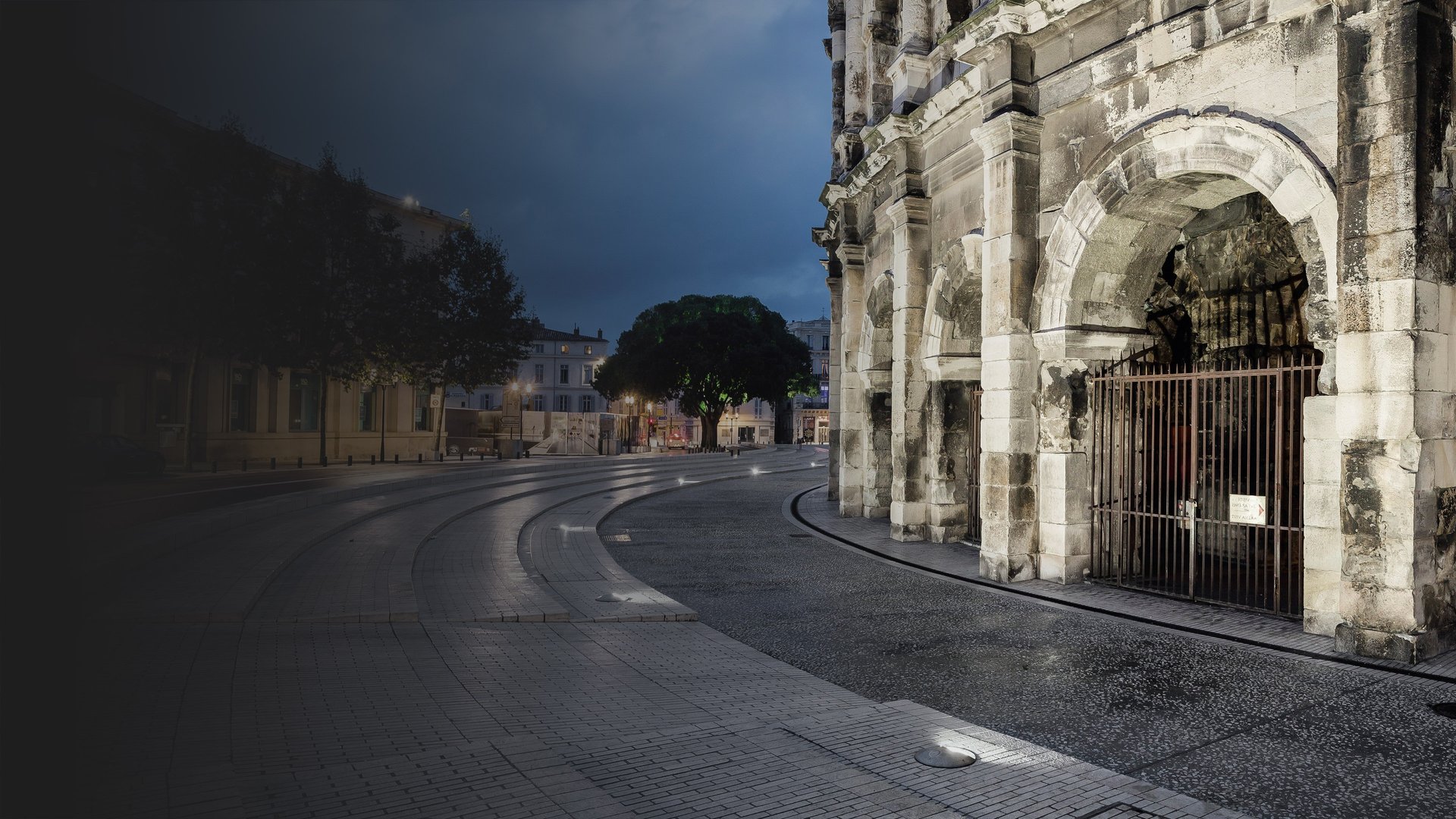

Yksi Euroopan suurimmista palatseista ja samalla maanosan historiallisimmista rakennuksista sädehtii erityistä taikaa kauas Ranskan rajojen ulkopuolelle.
Yli puoli kilometriä pitkän Versailles’n palatsin valaistussuunnittelun tavoitteena oli luoda ylevä valaistus, joka näkyy kauas pimeälläkin.
Tämä Unescon maailmanperintökohde toimi 1800-luvulle asti lukemattomien linnojen esikuvana. Arvokkaasti toteutetussa valaistuksessa on käytetty BEGAn erityisiä maahan upotettavia valaisimia. Kaksi lähes identtistä valaisinta, joita on ulkoapäin vaikea erottaa toisistaan, luovat harmonisen kokonaisuuden. Niillä on hyvin erilaiset valaistustehtävät palatsin luona ja puistoalueilla.
Veistosten ja istutusten täyttämiä laajoja puistoalueita valaisevat erikoismalliset maahan upotettavat valonheittimet . Erikoisheijastinten tuottama kapea valonjako valaisee lukuisten veistosten yksityiskohtia. Veistokset sulautuvat näin hienosti puistoalueiden ja taidokkaasti leikattujen kasvien joukkoon.



Avoiding glare in urban environments
Kaksi tasaisen valon antavaa valaistuskonseptia, asukkaiden etujen ja hyttyssuojauksen huomiointi
Lighting concepts in urban spaces can be realised for spatially limited areas, as well as for structures with larger dimensions:
In addition to the task of appropriately staging the illumination, the conditions of the immediate surroundings must be taken into account. An essential requirement here is to prevent glare. Light shielded upwards has proven to be particularly insect-friendly as well. The right choice of luminaires and effective accessories ensures satisfactory results for lighting designers and local residents alike.
The light stagings presented here follow the main brief of illuminating with uniform light. They do, however, use different concepts to match local conditions, while achieving outstanding lighting results for the respective projects. Thanks to The sprawling dimensions of the amphitheatre in Nîmes allowed the use of in-ground luminaires as wall washers for its illumination. The luminaires were placed close to the structure, so that viewers find themselves behind the light source to avoid glare. The uniform light without distracting light cones in the lower area stages the 2000-year-old bricks, with their varied colour shading, to perfection.




For the Porta Nigra in Trier, glare-free illumination was an important planning factor. The luminaires had to be installed at a distance from the structure and above the eyeline of viewers, as they would usually be located in front of the luminaires. This placement prevents glare. High-performance floodlights with shields and louvres create directed light for the uneven shape of the building in such a way as to achieve a very uniform illumination. Secondly, virtually every beam of light is captured and targeted precisely to exactly where the light is needed.
In Trier, precisely aligned luminaires with additional light-directing shields and louvres are installed on cross beams to avoid glare for visitors and residents by the Porta Nigra. The light distribution additionally addresses the concerns of insect protection.



